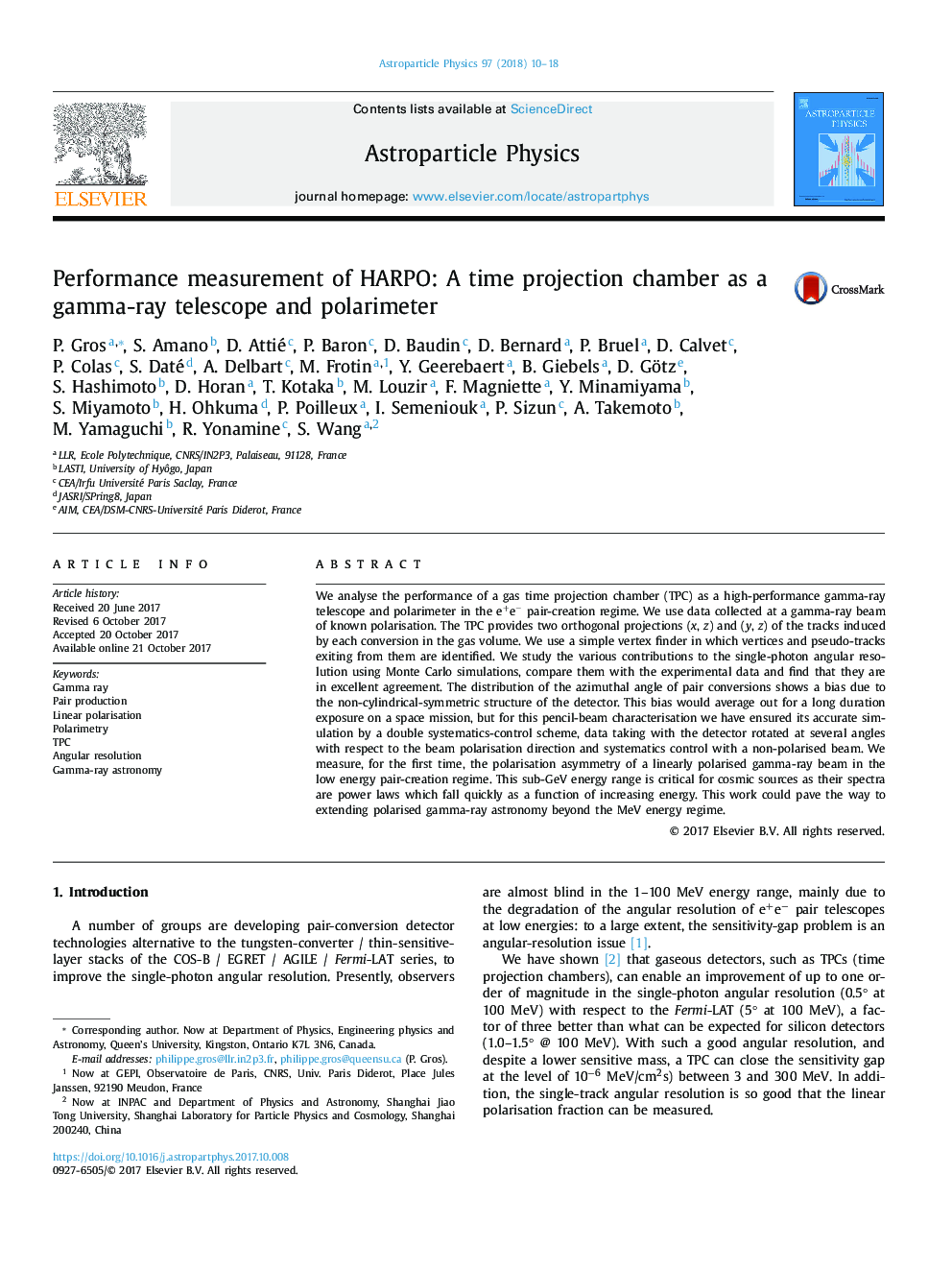| Article ID | Journal | Published Year | Pages | File Type |
|---|---|---|---|---|
| 8132735 | Astroparticle Physics | 2018 | 9 Pages |
Abstract
We analyse the performance of a gas time projection chamber (TPC) as a high-performance gamma-ray telescope and polarimeter in the e+eâ pair-creation regime. We use data collected at a gamma-ray beam of known polarisation. The TPC provides two orthogonal projections (x, z) and (y, z) of the tracks induced by each conversion in the gas volume. We use a simple vertex finder in which vertices and pseudo-tracks exiting from them are identified. We study the various contributions to the single-photon angular resolution using Monte Carlo simulations, compare them with the experimental data and find that they are in excellent agreement. The distribution of the azimuthal angle of pair conversions shows a bias due to the non-cylindrical-symmetric structure of the detector. This bias would average out for a long duration exposure on a space mission, but for this pencil-beam characterisation we have ensured its accurate simulation by a double systematics-control scheme, data taking with the detector rotated at several angles with respect to the beam polarisation direction and systematics control with a non-polarised beam. We measure, for the first time, the polarisation asymmetry of a linearly polarised gamma-ray beam in the low energy pair-creation regime. This sub-GeV energy range is critical for cosmic sources as their spectra are power laws which fall quickly as a function of increasing energy. This work could pave the way to extending polarised gamma-ray astronomy beyond the MeV energy regime.
Keywords
Related Topics
Physical Sciences and Engineering
Physics and Astronomy
Astronomy and Astrophysics
Authors
P. Gros, S. Amano, D. Attié, P. Baron, D. Baudin, D. Bernard, P. Bruel, D. Calvet, P. Colas, S. Daté, A. Delbart, M. Frotin, Y. Geerebaert, B. Giebels, D. Götz, S. Hashimoto, D. Horan, T. Kotaka, S. Wang,
